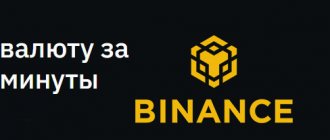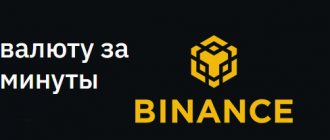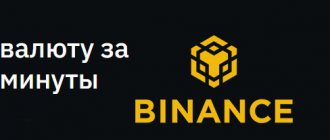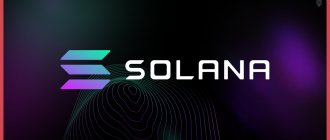Blockchain technology — a system used in the construction of cryptocurrencies, which is a distributed database (ledger). The chain records information about various operations, and the blockchain operates without communication with a central server. The main function of blockchain is the storage of blocks (elements) containing time data and a link to the previous network node. Blockchain technology is constantly developing, improving, revealing its potential and is increasingly being used in various fields.
Technology in simple words
The blockchain network is an interconnected chain of blocks that operates according to certain rules. The ledger is located on multiple PCs and is updated after each operation. Various data are entered into the cells of the system, starting with information about transactions and ending with the ownership of any work by a specific author.
READ Blockchain info – a technological breakthrough with huge prospects
When considering what blockchain technology is, it is important to start by defining the term. The word blockchain consists of two elements. The first (block) is translated from English as a block, and the second (chain) is a chain. At first the system was made for Bitcoin, but later the public liked the advantages of the system, which began to be used in other industries.
Blockchain is a chain of blocks connected to each other, filled with certain information (new records and information about the previous node). Blockchain elements are filled with information about transactions on the network (user actions: transfers, purchases, registration of rights, and so on). Once an operation is created, the transaction is sent to mempool and awaits confirmation. As soon as a block is formed, participants check it: if it is valid, they add it to the general chain. Accounts are constantly updated and always up to date.
Blockchain is a “ tough nut to crack ” for dummies, but it is enough to understand the principles of operation of the technology once so as not to return to this issue in the future. It is important to monitor the development of the system. Since its inception in 2008, blockchain has been upgraded many times.
Today there are three types of chain:
- Private. The peculiarity is control and verification with the help of a special body.
- Consortium. Transactions are coordinated with specific nodes.
- Public. There is no control from centralized authorities, transactions are carried out in a free mode.
Blockchain registries are of two types:
- Active. In a blockchain, the decisions of the members affect the operation of the chain. The user has the right to adjust the registry, change the status, content and other options.
- Passive. The user's work is limited to checking the information available to each member of the community. Information on the Internet is open.
Using blockchain technology, digital gold was created - this is the name given to Bitcoin, the leader of virtual coins. The system has a number of advantages:
- Openness of operations. The peculiarity of a distributed network is complete transparency and availability of information for each participant. The chain is subject to constant data verification, so counterfeiting or making changes to an already formed part of the chain is excluded. New information appearing on the blockchain is completely transparent and available for download by every user. In Bitcoin, when installing an official “heavy” wallet, a person downloads information about transactions for the entire life of the cryptocurrency to a PC. To obtain information about a specific operation, you should use special services, for example, blockexplorer.com. Just enter the block number, transaction or wallet address in the search bar to get detailed information.
- Decentralization. Governments of many countries are irritated by the advantages of blockchain technology: independence and the inability to control the operation of the system. There is no central server to store information, and the information is located on the computers of millions of users. Gaining even a fraction of the control would require large costs and enormous power. Blockchain technology has a fundamentally new structure and is superior in reliability to existing systems. Today, information about people, transactions, bank accounts and other data reside on one or more servers. If they are damaged or information is stolen, the system will collapse. With blockchain technology this is excluded: the chain is not afraid of hackers and external influence.
- Availability of copies on each user's PC. The blockchain resides on tens of millions of computers simultaneously, so there is no need to reconcile every transaction. When a new operation appears, it is validated by network participants. No one has the right to change the order of the blocks or make changes to the content. The key to a specific block of information is held by a specific user who has access to the information.
- Data encryption. By automatically encoding information, network confidentiality is ensured. A cryptographic principle is used that excludes the linking of the wallet number to a specific user. Information within chain elements is not available to third parties.
- High speed and accuracy of operations. Blockchain technology guarantees instant transactions without the involvement of intermediaries. Banking institutions, payment networks and notary offices are simply not needed. The correctness of the operation is verified by each network user with maximum accuracy.
Blockchain technology offers many advantages - users can carry out various transactions, be confident in speed, protection from unauthorized persons and transparency. Many call blockchain the new Internet due to the chain’s ability to store a huge database of information, regularly update and expand in volume.
Why is it needed?
Blockchain is a derivative of two English words meaning “block” and “chain”. The technology transmits information in the form of sequential blocks of data, encrypted and distributed on several computers.
This definition means nothing to the uninitiated user. More likely, questions will arise: how does data transfer work in general and why change it?
How modern transactions are conducted
The entire Internet runs through servers; High-performance devices process billions of requests every day, including banking transactions, sending instant messages, downloading files, and so on. Naturally, centralized maintenance requires considerable financial costs.
In addition to technical intermediaries, there are legal ones. For example, a financial institution will not issue an online loan without identification. It is impossible to save all the information, so there are third-party databases responsible for checking legal issues.
Money transfers cannot be done without intermediary services that require a commission for their “works.” You don't have to look far: sending funds from one bank to another is subject to interest, even if people live across the street from each other. “Throwing” money and data between services increases processing time, and clients pay for all actions. And if at the dawn of the Internet the very possibility of global transactions pleased us, today everyone is tired of constant overpayments.
Even commission-free service implies trusting money to a third party. The bank acting as a guarantor may go bankrupt, be subject to an attack or a technical failure. The financial stability of enterprises is very conditional, and users are under constant pressure. One global crisis and the company may cease to exist.
Blockchain is the ideal guarantor of the transaction
It turns out that between two clients who want to make an online transfer or transfer documents, there is always an intermediary - without him, it will be technically and legally impossible to process the transactions.
But blockchain has completely eliminated third parties. The technology allows you to work directly, while the level of security and reliability of data is much higher than traditional methods.
Let us emphasize the main advantages with separate theses:
- the most complex operations are completed within a few minutes;
- the absence of intermediaries makes transactions cheaper and increases their speed;
- the information is stored in a decentralized server: it is distributed across thousands of computers, so it cannot be stolen.
But how is this possible? Let's understand the principles of operation of the technical part.
How the system works
In simple words, blockchain is a huge number of tables made in electronic form and combined into a single database. The technology is convenient due to its advantages and ease of operation.
To understand how blockchain technology works, it is worth considering how the network functions. Algorithm:
- The user requests a transaction.
- The requested operation is sent to a P2P network formed from a group of PCs (nodes).
- The nodes in the chain check the operation and status by applying a certain algorithm. Blockchain participants act as nodes.
- A verified and approved transaction contains digital coin, contracts or information.
- The next block is formed in the distributed database. The element includes the most recent transaction and a group of previous transactions.
- A new blockchain element is added to the current system and becomes its permanent part.
- The operation was successful.
Transaction parameters:
- Securing information about the transaction. The user has the right to return and check the translation at any time.
- The ability to enter into the chain any information that interests a network member (not just monetary transactions).
- Reliable protection against fraudsters. The reliability of the chain and its resistance to hacking depend on the number of elements in the network.
Despite the efficiency and simplicity of blockchain technology, the system has a number of disadvantages. We are talking about partial anonymity (everyone can see information about the operation) and the need to revise the legislation. For mass implementation of technology, the will of the government is required. Many countries have still not decided whether to consider blockchain a separate system or an element of cryptocurrency.
READ How to speed up transfers to the blockchain and verify the transaction
Organizing facts
Decentralized peer-to-peer networks are not new. Napster and BitTorrent are P2P networks. It’s just that instead of exchanging movies, participants in the blockchain network exchange facts. So what is the real feature of blockchain? P2P networks, like other distributed systems, have to solve a very difficult computer science problem: conflict resolution, or coordination
.
Relational databases offer referential integrity
, but this feature is not present in a distributed system. If two incompatible facts arrive at the same time, the system must have rules for determining which fact is correct.
Take, for example, the problem of double spending
: Alice has $10 and sends it twice to Bob and Charlie.
Who will have $10 in the end? To answer this question, the best way is to organize
the facts. If two incompatible facts appear on the Internet, the one that is written down first will win.
In P2P networks, two facts sent at approximately the same time may arrive in different orders at distant nodes. Then how can the entire network agree on which fact came first? To guarantee integrity in a P2P network, you need a way to agree on the order of facts. You need a consensus system.
Consensus algorithms for distributed systems are a very active field of research. You may have heard of the Paxos or Raft algorithms. Blockchain implements a different algorithm, proof-of-work consensus, using blocks.
Distributed Database - Entity
The potential of blockchain technology can hardly be overestimated, and its main advantage is its well-thought-out structure. The blockchain is based on a table that has hundreds of thousands, or even millions of clones in the network. The distributed network is built taking into account the constant updating of information and its protection from outside interference. Information is regularly verified and monitored by the community.
The technology has a number of advantages. The database is not stored on one server, but is located in many places at the same time. This ensures that records are stored publicly and can be easily verified by each user.
Blocks
Blocks are a clever trick to organize facts in a network with untrusted nodes. The idea is simple: facts are grouped into blocks
, and there is only one chain of blocks that is replicated throughout the network.
Each block links to the previous one. That is, if fact F is in block 21, and fact E is in block 22, then fact E is considered by the entire network as next to fact F. Before being added to the block, the facts are under consideration
, i.e. not confirmed.
Reliability and durability of the blockchain
A feature of blockchain technology is its resistance to operational failures. The information stored in a block is the same across the network, so the blockchain cannot be controlled by a single authority or have a common point of failure. Since the technology was introduced in 2008, there have been no significant failures in the system.
Almost all problems that occur are related to hacking of sites or insufficient control of private keys by the user of the crypto network.
In simple words, the causes of problems in the use of blockchain are human errors. An example to follow is the global Internet, which has existed for more than 30 years and has shown effectiveness. Blockchain technology is not inferior to the Internet, and in many aspects it is ahead of it. Features of the distributed registry guarantee maximum accuracy of user registration and identification. With the help of blockchain, the legality of transactions is ensured by creating records on millions of PCs.
Translator's Preface
I offer Habrahabr readers a translation of the article “The Blockchain Explained to Web Developers, Part 1: The Theory” by Francois Zaninotto. I found this article on the Marmelab blog. The article is an excellent introduction to blockchain technology from scratch, but may also be interesting for those who are already “in the know.” It concerns not only how blockchain works, but also the prospects for its development, as well as where to start if you want to create your own project using blockchain.
Areas of application
Blockchain technology is used to solve a number of problems:
- Storing certificates in digital form. Information is protected from hacking or falling into the wrong hands. There is no information on central servers, so theft of valuable information is excluded.
- Network management. The blockchain system is convenient to use for storing keys and lists of users with the right to gain access to certain data.
- Control of information in financial markets . The technology is easy to use for storing and modernizing business processes, increasing the degree of security.
- Confirmation of intellectual property ownership. Transferring and storing rights to a specific development are simple tasks. Little is required from a person - to add new information to the block, which is automatically distributed throughout the network.
- Energy generation management. A distributed database allows you to monitor and manage different areas of the energy sector. Programs and other information necessary for stable network operation are protected from hacking or outside interference.
- Formation of the DNS system. With the help of blockchain, transferring names in domain networks does not carry any risks. The negative impacts of hackers are not harmful to governments, financial institutions and ordinary people.
- Help in the field of charity. Blockchain technology is often used to transfer money while maintaining complete anonymity and guaranteeing a secure transaction.
- Client verification. Today, a number of large enterprises use a distributed system to recognize partners, employees or users. Using the new technology is convenient and does not require large expenses.
- Electronic voting. Network use is available in the elective sector. Information about citizens' votes and their counting is reliably protected.
The applications of blockchain are endless. All that is required is the will of the governments of many countries and large companies for wider use of the technology.
Performance
Increasingly, public opinion about blockchain performance converges on one thing - the system is too slow, but this is not the case. Blockchain may not have the same speed as, for example, Visa, but it is in no way inferior to popular databases. In addition, it should be noted that an influential blockchain project was able to construct a network that is several times faster than Visa in terms of speed.
Of course, blockchain will soon increase its productivity, because, if you remember, the first traditional databases were absolutely not well optimized and were only able to achieve modern capabilities over time.
Blockchain wallet
In the cryptocurrency space, purchased or earned cryptocurrency must be stored somewhere. A blockchain wallet with wide functionality is suitable. Using a wallet, you can easily save coins and get detailed information about blocks or completed transactions. The repository has earned a positive reputation and is distinguished by its reliability and ease of registration. Wallet website - blockchain.com.
Here you can find current information about the cost of Bitcoin, hashrate, difficulty, average price and commission, and other useful data. To start working on the site and storing coins, you need to register.
READ What is a blockchain startup
Why is it important
“Blockchain is the most amazing technology I have ever seen.” Salim Ismail “The most interesting intellectual development on the Internet in the last 5 years.” Julian Assange "I think the fact that, thanks to the Bitcoin universe, the algorithm is replacing the functions of [government] ... is really very cool." Al Gore
These smart people saw huge potential in blockchain. Blockchain could potentially replace all the intermediaries that are needed to establish trust. Let's take a look at a few applications that are built on the blockchain and implement ideas of cutting out the middleman.
- Monegraph allows authors to secure rights to their work and set rules (and payments) for the use of their work.
- La Zooz is a decentralized Uber. Offer your car, find a carrier without paying Uber.
- Augur is an online bookmaker. Place your bets and get your winnings.
- Storj.io is a P2P data warehouse. Rent out your unused disk space or find the cheapest online storage.
- Muse is a distributed, open and transparent database specifically for the music industry.
- Ripple allows low-cost cross-border payments to banks
Today, many successful Internet businesses are intermediaries.
Think about Google: they have managed to become an intermediary between you and the entire Internet. And Amazon? They became an intermediary between sellers and buyers of all types of goods. That's why technology that eliminates middlemen could disrupt the Internet. Will users benefit from no longer needing intermediaries to exchange goods and services? It’s impossible to say for sure yet. The Internet has previously focused on the absence of intermediaries. However, Google has managed to build its market by being an intermediary. This is why it is critical to invest in blockchain quickly because the winners and losers of the next decade are being determined right now.
Blockchain wallet registration
Algorithm for creating a wallet:
- Go to the official resource blockchain.com.
- Clicking on the “ Register ” button.
- Filling in the required fields (email and password twice).
- Clicking on the “ Continue ” button.
The system transfers to the wallet and welcomes the new user.
From this moment on, you can use your wallet, conduct transactions, control your balance and solve other problems.
After registration, it is advisable to verify your email and make the necessary settings. To restore access to your wallet in the future, it is worth requesting and recording a mnemonic code. You must remember your wallet password.
FAQ
What will happen to Bitcoin after the last coin is created?
The demand for existing ones will increase, and their cost will accordingly increase.
What is Bitcoin backed by?
As long as coins are accepted as payment, they have value, so Bitcoin is backed by the price of the product that the coins buy.
Is it really impossible to rewrite a transaction?
Maybe. You just have to rewrite all the subsequent ones, and faster than the rest of the system participants. This is possible in theory, but in practice such an attack is unrealistic. With today's level of technology development.
Transaction on the blockchain network
The key advantage of blockchain technology is protection from third party penetration. The ledger records the history of transactions between network nodes and forms blocks with information. There are no intermediaries, and all operations are carried out using a special consensus protocol that ensures the agreement of information in the registry.
For example, let’s look at how a transaction takes place on the Bitcoin network:
- A network participant makes a transfer using a wallet.
- The transaction is sent to the Bitcoin network.
- The PCs included in the system combine hundreds of operations into one chain element.
- Miners check transactions for validity and receive coins (as of November 30, 2018, the reward is 12.5 coins).
- A new block appears in the database.
- The user sees the cryptocurrency in the account in the wallet.
During the transaction verification process, a consensus mechanism is used to eliminate the possibility of fraud. The Bitcoin network uses the SHA-256 protocol. With any, even minor, change in the chain, the hash changes. The use of digital signature guarantees that the transaction is carried out by the owner and not by a fraudster. Each network participant has equal rights, and connections are made to the same protocols. Users can be government agencies, ordinary citizens, companies, or other community members.
Practical implications
Facts stored on the blockchain cannot be lost.
They remain there forever, replicating to every node. Moreover, the blockchain does not just store the final state, it also stores all previous states. Therefore, everyone can check the correctness of the final state by recalculating the facts from the very beginning. We can trust the facts in the blockchain because... they are technically confirmed by consensus. Even if there are bad actors on the network, you can still trust her overall judgment.
Putting data on a blockchain is a fairly slow operation because it requires reaching a distributed consensus.
Clue:
If you have 20 minutes to spare for a deeper understanding, watch this excellent introductory video about Bitcoin, which also explains how the blockchain works.
Review of projects based on blockchain technology
Today there are a number of projects created on blockchain, and their number is increasing every day. This is due to the benefits of technology and the opening of vast opportunities for users. Each person can invest in a start-up project by spending a minimum amount, and in the future, earn money from the rise in the price of the token. Many blockchain projects are just developing, but have already earned popularity and are approaching the current leaders.
Ethereum
As of November 30, 2022, Ethereum ranks third in terms of capitalization and price. For example, the Bitcoin rate on the specified date is 4 thousand dollars, and the Ethereum rate is $114. As for capitalization, Bitcoin is at around $70 billion, while Ethereum is lagging behind at $11 billion.
Despite the lag, a number of experts are confident that the phenomenon is temporary. The main advantage of Ethereum based on blockchain technology is the presence of smart contracts - elements containing a specific execution algorithm. The project was launched on July 30, 2015, works on the Ethash algorithm and the PoW consensus mechanism, which is planned to be replaced by PoS in the future (2019).
Aragon
The Aragon blockchain technology project is considered a successful development for 2022 (release date: May 15). The creators spent more than $25,000,000 to promote the cryptocurrency. In just a week, the capitalization of coins tripled. The peculiarity lies in the creation of online projects, the implementation of voting, and the organization of fundraising platforms. Today, despite the active start, the excitement regarding Aragon has died down. As of November 30, 2022, the coin ranks 193rd in market capitalization ($14 million). Exchange price is about 44 cents.
NEM
Many people are so obsessed with Bitcoin, Ethereum and a number of other popular coins that they do not notice equally interesting tokens. For example, on March 31, 2015, the NEM cryptocurrency appeared. A group of specialists from Japan acted as the creators of a coin based on blockchain technology.
According to the principle of operation, the project has much in common with Ether, but in the case of NEM, the speed of operations comes first. It takes a minimum of time to confirm the transaction. With the help of cryptocurrency, it is possible to carry out thousands of transactions per second due to its high throughput. Today the coin ranks 16th in terms of capitalization with a value of $671 million, and the exchange rate is 0.07 cents per coin.
Ripple
As of November 30, 2022, the XRP cryptocurrency is in second place in terms of capitalization, having overtaken Ether (the parameter is equal to $14.7 billion). The market value of the coin is 35 cents. Ripple makes it easier for banks to complete transactions in less time.
Today, XRP is being tested by many companies, noting the convenience and reliability of the system. The disadvantage is the “shadow” distribution of coins. It is believed that half of the coins built on blockchain technology are under the control of the creators, so there is always a risk of a collapse in the market price. The current trend of capitalization growth indicates great prospects for the coin.
Sia
The Sia platform is a cloud storage service. The information is located on many servers, “scattered” across different parts of the planet. Each provides a specific portion of the hard drive. The profit of the person providing free space depends on the reliability of data storage and stability.
The participant downloads the file from the PC. Next, the document is encoded, divided into blocks and distributed among the PCs of other users. The information is repeated, so when elements are disabled, functionality is maintained. Pros: low cost of storage, protection against theft, reliable encryption typical of blockchain technology. Today, the project’s coin (Siacoin) ranks 48th in terms of capitalization with $113.8 million. The rate is $0.0029.
Dash
Among users of the crypto network, the Dash cryptocurrency is in demand, characterized by an increased level of anonymity. The peculiarity of the development is to maintain confidentiality at the protocol level. Additional advantages: ease of management, instant confirmation of transactions and other advantages of projects based on blockchain technology.
The price is $92.9, and the coin is in 14th place in terms of capitalization ($788.6 million). According to some experts, cryptocurrency is capable of outperforming Bitcoin.
MaidSafeCoin
The project, built on blockchain technology, appeared on April 22, 2014. Users receive rewards for transferring computing power and storing information. Features: lack of control, high level of anonymity. The downside is centralized management, and this is an unpleasant factor for cryptocurrencies. Capitalization as of November 30, 2022 is 73.8 million, and the exchange rate is $0.16.
Security Paradigm
Shared databases have suffered in the past from an inability to prevent malicious activity. This occurs, for example, when one of the participating nodes is compromised and that entity writes "corrupted" data to a shared database, rendering it invalid for all participants.
This same problem also exists in centralized databases.
Private blockchains solve this problem using cryptography and technologies similar to those used by Bitcoin and public blockchains.
The Juno Protocol improves the security features of the blockchain by protecting against random hacker attacks, thereby preventing individual participants from acting maliciously.











